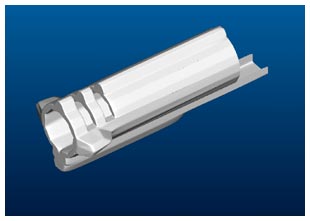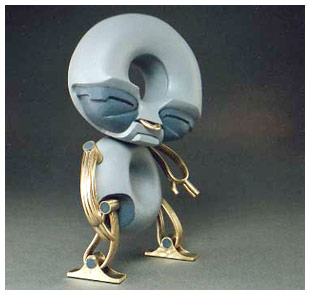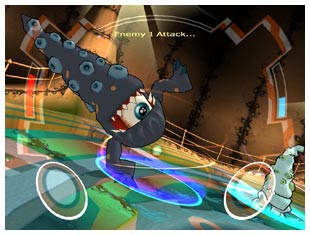
Some of my entries are going to seem like they just don’t belong here. I realize that. I post entries on applied art, virtual reality, and rapid prototyping technology, and a fair number of you probably don’t see how I connect those things; especially if you’re only looking at a particular type of entry (e.g. “meatspace”).
I like to think of it as a kind of spiderweb-in-progress. I see these strands between disciplines, the increasingly dense interactions we all have on almost every level both real and abstract, and read things that seem to confirm I’m not entirely off-base. One such thing I’ve read is Seth Godin’s (Idea Virus) blog entry for today. From his entry:
That’s what marketers do. We have the “placebo affect.” (* The knack for creating placebos.) Of course, we need to persuade ourselves that it’s morally and ethically and financially okay to participate in something as unmeasurable as the placebo effect. The effect is controversial and it goes largely unspoken. Very rarely do we come to meetings and say, “well, here’s our cool new PBX for Fortune 1000 companies. It’s exactly the same as the last model, except the phones are designed by frog design so they’re cooler and more approachable and people are more likely to invest a few minutes in learning how to use them, so customer satisfaction will go up and we’ll sell more, even though it’s precisely the same technology we were selling yesterday.”
His comment brings to mind an interview with architect Peter Eisenman (you know, the guy who did that Berlin museum thing the press was talking about not long ago). I’m referring to this part (punctuation corrected):
Archinect: I just mean making it pretty as opposed to ugly.
Eisenman: I don’t know if I would say it’s “pretty”.
Archinect: I liked it, and I don’t mean “pretty” as an insult.
Eisenman: OK. Let’s say, making it something that people take notice of, that causes them to say, I like it or I don’t like it.
Archinect: That improves the built environment.
Eisenman: Yes. OK.
Any trip over to the Core77 design forums will likely yield some ongoing flame war over terms like “pretty” and “styling” and “design” that’s not too dissimilar to the above exchange. Designers are very conscious of this “placebo affect“. We are – to use his term – accomplices.
But now allow me to connect this back to a recent entry I made called “Selling the Experience“:
Friend: Can you imagine that? Someone paid like a $100 for this sword-thing and it’s not even real! It’s nothing. Make believe. It only exists in the game.
Me: You need to think about it differently.
Friend: But it doesn’t make any sense. They’re buying nothing!
Me: What do you buy when you get tickets to a baseball game? Or a concert?
The metaverse is – to borrow Mr. Godin’s term – a “storyteller’s” world (and that’s not just for Marketing, but for anyone… especially Content Creators). I’ve certainly pushed that side of it because of disconnects like my friendly exchange above. Average consumers (the one Mr. Godin is saying Marketing lies to) have been so effectively “placebo-ized”, they can’t tell what they’re buying anymore! To me, consumer behavior is more like an addiction, and too many of them are working and spending in something akin to a kind of lab-rat-on-speed experiment gone awry. Heaven forbid we should tell them what I’m going to say next.
The metaverse is not just an ethereal “storyteller’s” world. It’s a world comprised of data. Just look at the reasons Marketing people are salivating over it. The tracking data is orders of magnitude better than trying to count eyeballs watching a television screen. And in a 3D interface (which is what those videogames really are), that data goes well beyond just “hits” or “click-throughs”- it’s comprised of “vectors” and “3D positional data”. And here’s the important part: that data can be converted into more than just marketing statistics. It can be converted into real product; something you can hold… in the flesh. The Story made Real.
The image above is a screen capture from Pro/ENGINEER CAD, perhaps the most widely used product development 3D application for design and manufacturing. That object is a piece of a virtual game object “captured” from id’s Quake 3 videogame (the barrel of a Rocket Launcher). It was not created in my CAD application. It was not ripped from the game files. I “hijacked” the data streaming to my monitor using a freely available tool. And now, if I desired, I could manipulate the data and create a real product.
Imagine now that I’m in the Long Tail, with a home fabrication unit and an eBay store. Things start to get really interesting, don’t they?
Seth Godin talks about having an accomplice. I wonder if he realizes just how far that extends. I also hope that in this brave new world, the word “partner” becomes more appropriate than “accomplice”.




